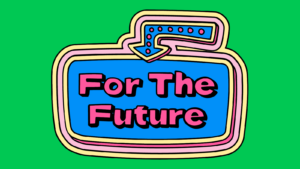For a teacher trained to teach older children, teaching very young learners is a challenging job. The methods and approaches used when teaching older children cannot simply be transferred to lower age classes. Young learners need action and active involvement much more, especially when learning a foreign language.
I did not use to like teaching very young learners (ages 6-10). I didn’t feel comfortable thinking I had to make my lessons fun, amusing, and interesting with no idea or knowledge of how to do that. With years of teaching and experience, I slowly started feeling more comfortable with lower age classes. But it wasn’t until I participated in a course called Playing games is serious business by Mija Selić, that I started practising the Project-Based Approach in my classes, and I started to enjoy teaching young learners.
Me as a teacher
Being a teacher for 17 years, I know my weaknesses as well as my strengths. I am most at ease when reading stories. The Project-Based Approach (PBA) appeals to me, mostly because of how the content is being passed on the learners. With PBA, I introduce a new theme through a picture book. For very young learners, I sometimes use a song. The story is the basis of my structured plan for 10 to 15 lessons of 45 minutes. The topics I cover using one book are mixed: animals, clothes, family, nature, etc. Mija Selić offers a list of recommended books, but basically, all books are fine if you know what you intend to practise and how you intend to tailor the parts of the book, so they suit your aims.
Lesson structure
When I enter the classroom, the children are usually everywhere around the classroom, and only a few notice that I’m really there. When everyone is at their places, I start my lesson with an activity that is short and effective. Just to draw their attention and focus. It’s usually the shapes which include the coordination of legs and arms or with a song they are familiar with
After that, I invite the children to form a circle, and we either revise vocabulary or practise language structures using flashcards. The activities with elements of a game (LINK elements of a game) make language learning more engaging and natural. Children need to play in order to learn. As I mentioned, I didn’t use to like teaching very young learners because I didn’t have the knowledge of how to make my lessons more playful and fun. I got lots of ideas about different seminars and workshops. It is, however, very important for me to have a structured plan and a plan of different games I intend to use in my lessons.
Reading badge
I recently introduced a reading badge for my young learners (ages eight and nine). They are used to an activity called a Reading Badge in their mother tongue, where they read a book and then tell their teacher a summary of the book. My young learners cannot, of course, do that. I invite them to choose a book from a selection I made, or I sometimes offer them a book myself. They take the book home, check the pictures, “read”/find some familiar words and sentences, and then they come to me. We go through the book again, then I tell the story, and after I ask them some questions.
Sometimes they read some parts and sometimes they do exercises at the end of the book. Besides developing children’s appreciation of books, the main aim is to make a bond between them and me. We talk about the book in a way to make them feel they already know a lot of about the foreign language, we laugh at the pictures, feel the characters, etc. There are sometimes children who do not want to be exposed to the class but rather come to me individually. Creating a positive emotional environment is important for the same reason as using games. To make children feel comfortable and safe. I expect that reading books with my young learners will make a special bond between us.
To sum it up, teaching young learners a foreign language is a challenging job, but it is also much more rewarding than teaching older children. In most cases, I leave the classroom pleased with my lessons and the children’s improvement.




